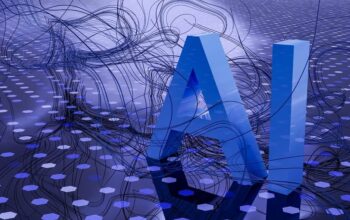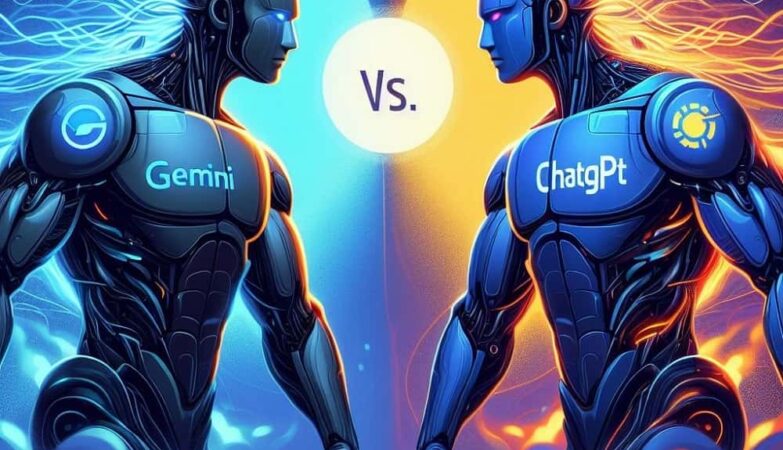Bitcoin (BTC) was the first cryptocurrency, and it took the world by storm when it was established in 2009 by the mysterious and pseudonymous Satoshi Nakamoto. Bitcoin has grown in popularity as an alternative store of value as a result of its unique design and status as the first.
Then, in 2015, came Ethereum. One of Ethereum’s most important new features is its smart contracts potential, which might automate digital payments and agreement execution when specific criteria are satisfied. Ethereum has grown into a massive network that has become a hub for decentralized finance and non-fungible tokens (NFT).
Following Bitcoin and Ethereum, Cardano has become one of the most popular blockchain platforms. That wasn’t always the case, though.
Cardano’s native cryptocurrency, ADA, has dropped to an all-time low of under US$0.02 only a year ago. However, a lot has transpired in the last 12 months. Since then, ADA has increased by roughly 7,400%. As of publication time, Cardano’s ADA coin is the world’s third most valuable cryptocurrency by market capitalization, after bitcoin and Ethereum’s ETH.
Let’s take a deeper look at the Cardano project, what it’s all about, and where this so-called third-generation blockchain is headed.
Table of Contents
What exactly is Cardano, and what sets it apart from other blockchain platforms?
Cardano is a decentralized blockchain that may be used to create and run smart contracts and other decentralized protocols. A team led by Charles Hoskinson, a co-founder of Ethereum, constructed the project from the ground up. Cardano, unlike many other blockchains, did not start with a white paper. It was, however, the first blockchain to be peer-reviewed and built by academic professionals.
Blockchain technology before Cardano
Hoskinson and others have been outspoken about the Bitcoin and Ethereum blockchains’ flaws.
Bitcoin was designed to do away with the need for a central authority to verify transactions. It was quite safe due to its simple design. However, the Bitcoin blockchain is immutable and has few applications outside of payments. Bitcoin has been dubbed a first-generation blockchain.
Ethereum is a second-generation blockchain, as the name implies. Ethereum was launched in 2015 as a platform for smart contracts and decentralized applications. Users might exchange money, property, shares, or anything else of value in a transparent, conflict-free manner while without the necessity for a central authority. However, Ethereum has come across issues like high gas fees and scalability.
Cardano is a member of the so-called third generation of blockchain technology, which also includes Polkadot and Cosmos. Aside from scalability, third-generation systems like Cardano also aim to address concerns like interoperability and sustainability that plagued previous generations.
The beginnings of Cardano
After departing Ethereum in 2014 due to a disagreement with the team running the Ethereum Foundation about governance and the use of venture capital, Hoskinson founded Cardano with his former Ethereum colleague Jerry Wood.
Cardano is funded by the same-named foundation, which supports the protocol’s and community’s research and development. The development of the Cardano project is being led by the for-profit company Input Output Hong Kong (IOHK). Hoskinson is also the CEO of IOHK. Before introducing Cardano to the world, the team enlisted the help of top academics from a number of colleges across the world to examine their work.
Cardano created its native cryptocurrency ADA in 2017, named after Ada Lovelace, a 19th-century mathematician and the daughter of English poet Lord Byron. By being the first to publish her proposal for a machine algorithm for a computer-like “analytical engine,” Lovelace is acknowledged as one of the world’s earliest computer programmers. The Cardano project is named after Gerolamo Cardano, an Italian polymath.
The philosophy of Cardano
From the beginning, Cardano stood apart from other blockchain initiatives. Instead of publishing a white paper, Cardano developed a set of unique design principles, technical best practices, and pathways for further exploration in order to achieve its objectives. The Ethereum challenger has risen to global prominence as a result of this move in just a few years. The project is still completely open source and patent-free.
Cardano’s blockchain architecture
Cardano is split into two layers: the Cardano Settlement Layer (CSL) and the Cardano Computational Layer (CCL), which distinguishes it from other smart contract platforms. Because Ethereum is built on a single layer, it has experienced network congestion, sluggish transaction speeds, and high gas prices.
Through the CSL and CCL, Cardano aims to overcome these challenges.
Its CSL layer enables peer-to-peer transactions, such as the exchange of tokens between users. Cardano’s balance ledger is the CSL. Cardano seeks to improve Bitcoin’s proof-of-work protocol by using a proof-of-stake consensus process (Ouroboros protocol) to produce new blocks and confirm transactions.
Cardano definitely shines when it comes to the CCL layer. The CCL drives the blockchain’s processing demands, allowing smart contracts to be executed.
This layer is run independently of the settlement layer to allow for flexibility in the event that changes are required. Its off-chain protocol allows it to provide more data storage flexibility as well as an access model that allows users to establish unique rules for transaction validation.
Key Concepts to Understand
Cardano’s consensus algorithm is called Ouroboros. It’s a proof-of-stake system with a difference. Proof-of-stake permits transaction blocks to be created by nodes with the most stakes (or currency). The Ouroboros algorithm operates in a unique way.
With the Ouroboros, the Cardano team divided physical time into epochs made up of slots, which are just set periods. These so-called epochs work in a circular pattern, with one epoch ending and another beginning. This reduces network congestion and saves money on gas.
The epochs are further separated, with a slot leader picked by other nodes for each. The construction and confirmation of transaction blocks to be added to the blockchain will be overseen by these slot leaders. If the chosen slot leader is unable to construct a transaction block in an epoch, the next slot leader will try.
The input endorsers, who are the second group of stakeholders running the Ouroboros protocol, will review the transaction blocks submitted by the slot leaders. These input endorsers are also chosen depending on how much ADA they have invested in the network.
The Ouroboros mining mechanism eliminates the requirement for the Bitcoin and Ethereum networks’ energy-intensive proof-of-work protocol, which has been a source of controversy and unfavorable attention.
Proof of stake is thought to be the consensus mechanism that will eventually replace Bitcoin’s proof-of-work protocol. Crypto miners can spend processing resources in a proof-of-work mechanism to see who will be chosen to mine a transaction block. The network’s native coin is awarded to the successful miner.
Proof of stake is a mechanism that Ethereum is attempting to implement as part of its Ethereum 2.0 development. Nodes will be chosen based on the quantity of coins they have staked. The slot leaders are picked at random and are responsible for creating and confirming network transaction blocks.
Cardano’s Ouroboros protocol aims to make this decision as random and secure as feasible. Developers may now create tokens on the Cardano blockchain, just like its cryptocurrency ADA, according to the platform’s recent “Mary” upgrade. Users will be able to keep their digital assets on the Daedalus wallet or the Yoroi wallet, which allows users to monitor digital assets in which they have an interest.
Hard forks are large updates to a blockchain protocol’s source code that result in significant changes by rendering the prior version unusable.
The network’s next phase began with Cardan’s latest Mary hard fork update. The upgrade, which is named after Mary Shelley, the author of “Frankenstein,” is intended to move the Cardano blockchain from the decentralization age (called Shelley) to a new multi-asset era, which Cardano refers to as the Goguen phase. Cardano will become a system that will allow developers and organizations to generate unique tokens on the network, according to Goguen, which is named after computer scientist Joseph Goguen.
Cardano has gained increased recognition for the DeFi community as a result of the hard fork combinatory that went live on March 2. Cardano is now available to crypto fans searching for increased scalability for their DeFi, non-fungible tokens (NFTs), or stablecoins projects.
Mary is an important aspect of IOHK’s expansion strategy. Cardano’s standing as a potential “Ethereum killer” will be bolstered as a result of the upgrade, which promises to eliminate exorbitant gas fees, create a far more scalable and secure network, and strengthen Cardano’s standing as a potential “Ethereum killer.”
Following Goguen, the Basho period is next on Cardano’s plan for future development, with the goal of improving interoperability and scalability. Voltaire will usher in the final period, which will see the introduction of a vote and treasury system for governance.
What does the Cardano project’s future hold?
High costs have been a stumbling block for the DeFi industry. With record values locked in, the demand for these projects is growing, but Ethereum’s gas fees have made them an expensive endeavor. Cardano’s Mary upgrade aims to address all of these issues and more.
Developers on the Cardano network can now generate bespoke coins or import projects from other blockchains. This could be advantageous for new and exciting projects in the DeFi and NFT ecosystems, for example.
Will Cardano’s Mary upgrade finally establish the once-underdog cryptocurrency as a viable competitor to Ethereum? While Cardano is leading the way, other blockchain platforms, such as Ethereum, are battling it out to solve concerns like scalability and sustainability.
However, in the realm of technology, the winner isn’t always the finest technology, but rather the one with the best business strategy. Cardano’s Africa and Fortune 500 plan will have to wait and see if it succeeds.
Disclosure:
Please note that we are not authorised to provide any investment advice. The information on this page should be construed for information purposes only.








